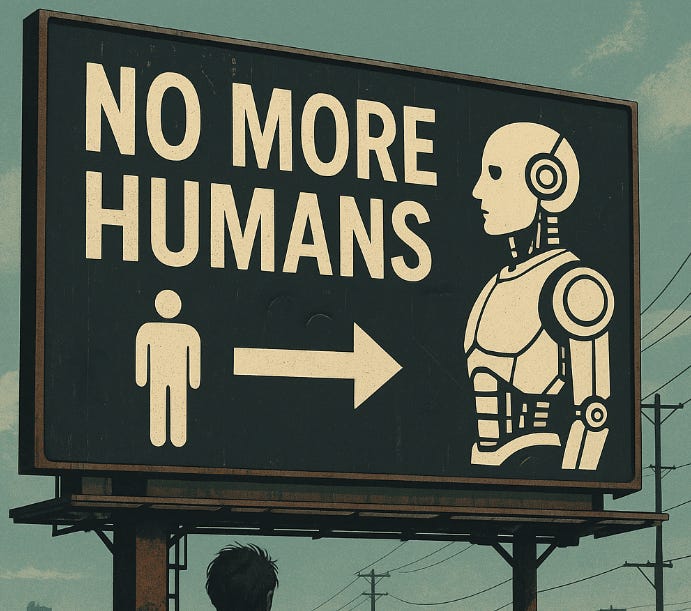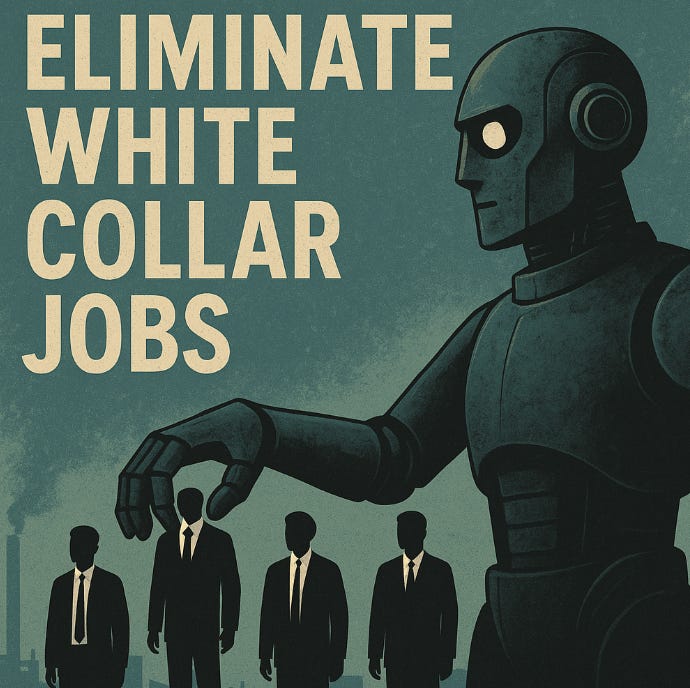Not long ago, the fear was that robots would steal factory jobs. Now artificial intelligence is coming for the cubicle. From accountants to customer service reps, white-collar workers are suddenly vulnerable. In 2023, IBM paused hiring for certain back-office jobs, projecting that roughly 7,800 positions could be replaced by AI within five years.² Roles in human resources and administration were cited as most at risk.
This is emblematic of a broader shift. A recent Goldman Sachs survey found that only about 1 in 10 large firms have cut headcount due to AI so far, yet many plan to.³ Companies expect an 11% reduction in staff within three years as adoption accelerates. The most threatened jobs are customer support and administrative roles — positions long considered “safe” with a college degree.
As firms chase efficiency, the middle-class worker — once the symbol of stability — has become expendable.
White-Collar Layoffs Signal a Shift
Blue-chip layoffs now dominate headlines, with the cuts coming from offices rather than factories. Amazon recently announced plans to eliminate about 14,000 corporate jobs, or 4% of its white-collar workforce, as part of a restructuring to integrate AI across divisions.⁵ CEO Andy Jassy has stated that deploying AI tools will “likely lead to further job cuts” by automating repetitive tasks.⁶ Reports suggest up to 30,000 corporate positions could eventually disappear.⁶
The pattern extends beyond Amazon. Meta has conducted multiple layoffs, including in its Superintelligence Labs division. Oracle, Dropbox, and Block (Square) have trimmed staff after expanding AI partnerships.⁷ Even companies such as UPS and Target — far removed from Silicon Valley — announced thousands of white-collar cuts this year as they automated internal functions.⁸
For corporations, the rationale is clear: boost productivity and margins by using AI and employing fewer humans. Amazon’s algorithms now accomplish what layers of managers once handled. As one analyst noted, “AI-driven productivity gains” have made many office roles redundant.⁶ For workers who once expected lifelong security, the disruption is unprecedented. AI is no longer nibbling at the edges of employment — it is rewriting its core.
Data Centers: The New Factories?
Even as job losses mount, a boom is underway elsewhere — in data centers, the sprawling warehouses that power cloud computing and AI. These facilities have become the factories of the digital age, processing petabytes of data rather than stamping steel.
Spending on new U.S. data centers has surged nearly 18% this year, while factory construction has fallen by about 2.5%.⁹ Data centers and manufacturing facilities together accounted for 94% of private non-residential construction growth in 2024.¹⁰ A decade ago, data centers were barely 5% of new office construction; today they make up roughly one-third and could reach 40% by 2028.¹⁰
Goldman Sachs analysts expect data-center investment to rise sixfold over three years as companies race to support AI workloads.¹¹
*Inside a Google data center in Ohio. Companies are investing heavily in such facilities — essentially the digital factories of the AI era — to meet exploding demand for cloud computing and AI processing power.*¹²
Keep reading with a 7-day free trial
Subscribe to The Lead-Lag Report to keep reading this post and get 7 days of free access to the full post archives.



